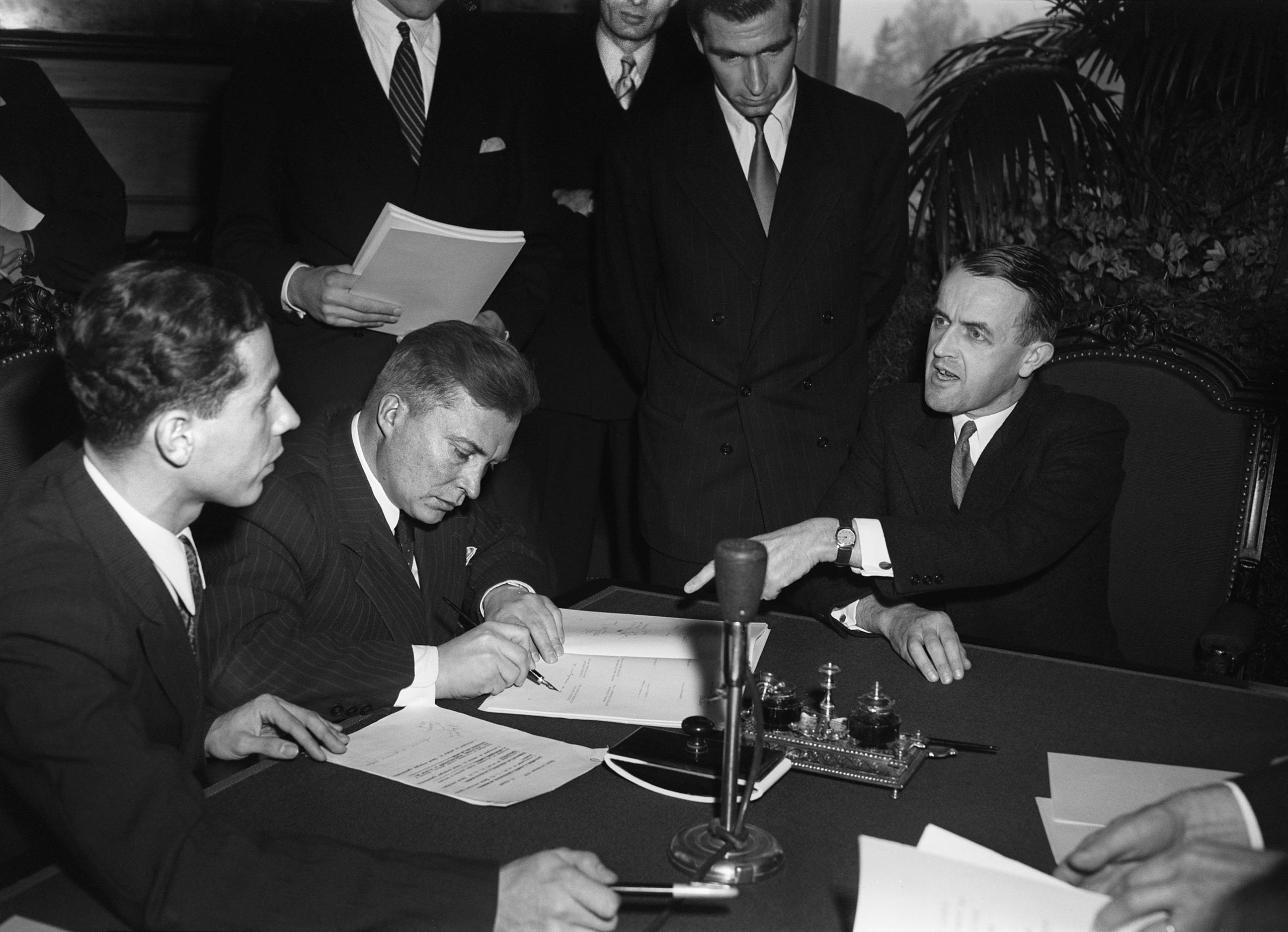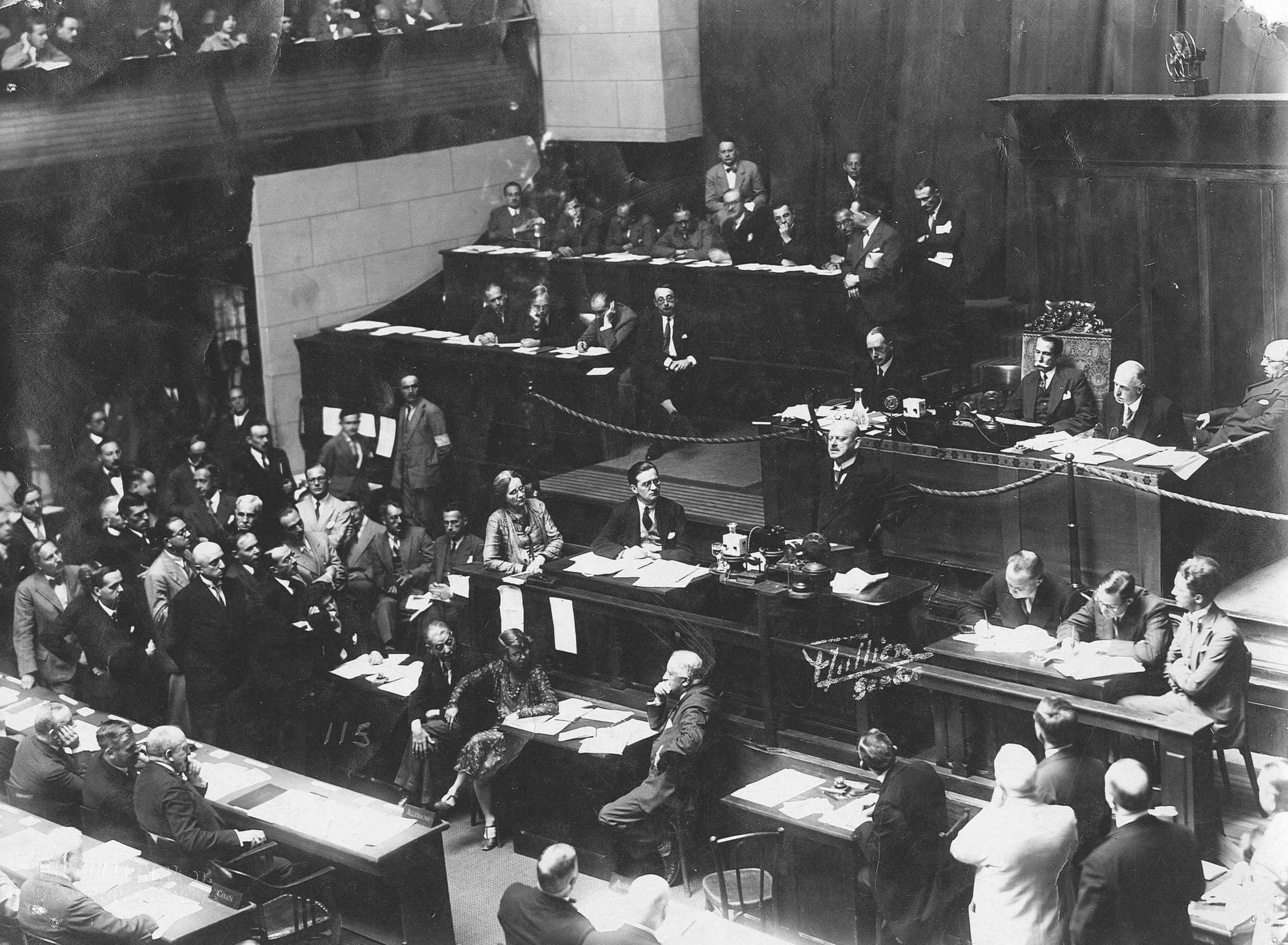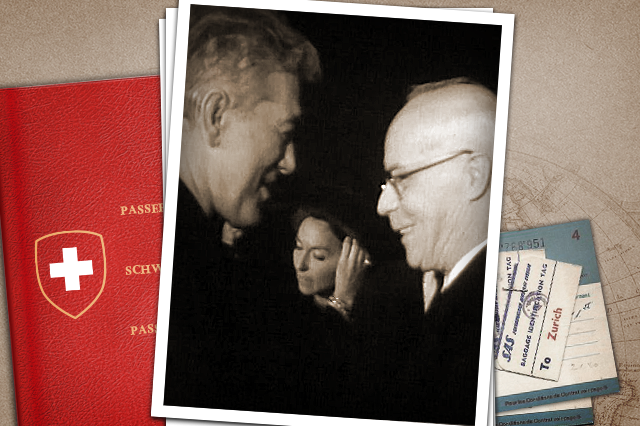The long road to the Geneva Conventions of 1949

Seventy years ago, Switzerland achieved a modest diplomatic coup. Notwithstanding the relative isolation in which it found itself after the Second World War, due to having maintained relations with the Axis powers, it succeeded in organising a major diplomatic conference in 1949 with the purpose of revising the Geneva Conventions. This was an essential step in the development of international humanitarian law.
The Second World War was a particular strain on the International Committee of the Red CrossExternal link (ICRC). Although the organisation had been able to help thousands of prisoners of war, its efforts to protect civilian populations were less successful. The RedExternal link Cross was all but powerless in the face of the extermination of Jews, Gypsies and others.
Switzerland, the depositary state of the GenevaExternal link Conventions, had been aware for some time that the basis in international law for the activities of the Red Cross was inadequate to deal with the realities of modern warfare.
Necessity for reform
“The great humanitarian effort conceived by [Red Cross co-founder] Henri Dunant has been of tremendous service in time of war, and it could continue to be. But its effectiveness depends to a great extent on the legal means to act which it has at its disposal”, wrote the federal government in a letterExternal link to the signatory states of the Geneva Conventions in June 1939.

“At the international conference of the Red Cross in Tokyo in 1934, work had already begun on a revision of the Hague and Geneva Conventions and further amendments, notably for the protection of civilians”, recalls Sabine Dändliker, a researcher at the Swiss Diplomatic Documents archive (Dodis).External link
In the following years, two committees of expertsExternal link worked out proposals to be discussed at a diplomatic conference that Switzerland hoped to organise in 1940. But by that time war was raging, and the conference neverExternal link happened.
The issue reemerged soon after the end of hostilities, and not on the initiative of Switzerland alone. During a meetingExternal link in June 1945 with Carl J. BurckhardtExternal link, president (on leave) of the Red Cross and Swiss ambassador to Paris, French foreign minister Georges Bidault referred to “the necessity to get to work on the codification, within the conventions, of everything we have learned from this war, and especially the issue of protection of civilians.”
In April 1947 a committee of government experts, assembled by the Red Cross, met in Geneva and drafted recommendations for a revision of the 1929 Geneva Conventions on the sick and wounded and on prisoners of war, and of the Hague Convention of 1907 on war at sea. Key points were listed for a new convention on protection of civilians in time of war.
Geneva international conference
“More than all those that preceded it, this last conflict caused unspeakable suffering. Total war strikes cruelly and blindly. It spares no-one. The disasters and suffering it causes are terrible. The 1929 Conventions have shown themselves to be powerless to mitigate these effects, often enough. Our task here will be to take into account the tragic experiences which the world has lived through, and fill the gaps which have become apparent in the 1929 provisions. […] Above all, the Second World War has shown that the Geneva Conventions would be incomplete if they did not also ensure the safety of civilian populations.”
From the speechExternal link by Swiss federal minister Max Petitpierre at the opening of the Geneva diplomatic conference, April 21, 1949
Based on the work of the committee, the ICRC asked the Swiss government to set about organising a diplomatic conference to discuss new conventions. The government respondedExternal link immediately. “In an international context that had changed radically it was vital for Switzerland, which did not belong to the UN, to emphasise the importance of its neutrality and maintain its role in the development of international humanitarian law,” noted Sacha Zala, head of the Dodis archive.
The process of revising the Geneva Conventions gave Switzerland the opportunity, as was notedExternal link in July 1947 by Paul Ruegger, Swiss envoy to London and a future president of the ICRC, to demonstrate “the value and the necessity of Swiss neutrality without which the work of the International Red Cross cannot be […] effectively carried out.” Even though, the diplomat added, Switzerland needed to avoid giving the impression of “wanting to combine the interests of this country with those of the international organisation in Geneva.”
The path to amending the Geneva Conventions was not however free of obstacles. Whereas the agreement of the Netherlands, the state that was the depository of the Hague Convention, was no great problemExternal link, considerably more difficulty was caused by the criticismExternal link of the ICRC from the American Red Cross and Sweden.
US ambition
Bern wasExternal link wary of “the ambition of the United States to run things” (this involved replacing the ICRC with the League of Red Cross Societies, which was dominated by the Americans), and competition in the humanitarian field from Sweden, which unlike Switzerland had joined the UN.
On the other hand, the participation of eastern European countries in the process of amending international humanitarian law was also an issue. Paul Ruegger hadExternal link emphasised in 1947 that “one condition for success is, without doubt, the effective participation of the Soviet Union and the states behind the ‘Iron Curtain’.”
One possible barrier to the participation of eastern bloc countries was the presence of Franco’s Spain, which was invited to the conference External linkas one of the signatory states of the 1929 Geneva Conventions. The invitation extended to Israel, where the provisional government of 1948 had notified the Swiss government of its intention to join the Geneva Conventions, also created some turbulence. On the opening day of the diplomatic conference in Geneva, April 21, 1949, the heads of the delegations from Afghanistan, Egypt, Lebanon, Pakistan and Syria protestedExternal link “vigorously” about the presence of “Zionists from Palestine under the name of ‘State of Israel'”.
Difficulties notwithstanding, “despite the expected divergences of opinion, which at times went quite deep”, asExternal link federal minister Max Petitpierre put it, the Geneva diplomatic conference which he chaired was a success. On August 12 1949, all the delegations in attendance signed the concluding declaration. Seventeen countries, Switzerland included, immediately initialed the four conventionsExternal link as drafted by the conference. Another signing ceremony took place in Geneva on December 8, 1949. Four days later, the Soviet delegation, which had been delayed getting to Switzerland by adverse weather conditions, also signed the documents.
Petitpierre had written to Paul Ruegger some time before: “Like you, I think that the Conference brought out what is constructive in the perpetual neutrality of this country.”
Translated from Italian by Terence MacNamee

In compliance with the JTI standards
More: SWI swissinfo.ch certified by the Journalism Trust Initiative













You can find an overview of ongoing debates with our journalists here . Please join us!
If you want to start a conversation about a topic raised in this article or want to report factual errors, email us at english@swissinfo.ch.